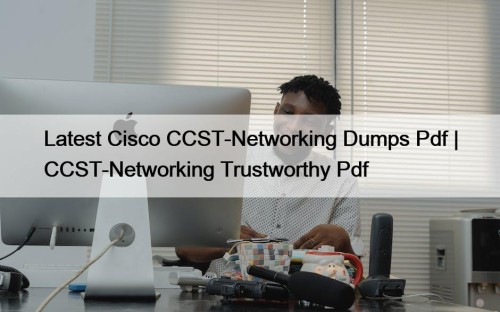Most Popular
 AZ-204 Relevant Answers - AZ-204 Reliable Test Online
AZ-204 Relevant Answers - AZ-204 Reliable Test Online
BONUS!!! Download part of Pass4cram AZ-204 dumps for free: https://drive.google.com/open?id=1XQkWjCiDWbRVvdD9rDlnxv-D7LyO0CM4Please ...
 Latest Cisco CCST-Networking Dumps Pdf | CCST-Networking Trustworthy Pdf
Latest Cisco CCST-Networking Dumps Pdf | CCST-Networking Trustworthy Pdf
BTW, DOWNLOAD part of 2Pass4sure CCST-Networking dumps from Cloud Storage: ...
 Test AWS-Solutions-Architect-Associate Questions Pdf | AWS-Solutions-Architect-Associate Questions Answers
Test AWS-Solutions-Architect-Associate Questions Pdf | AWS-Solutions-Architect-Associate Questions Answers
P.S. Free 2025 Amazon AWS-Solutions-Architect-Associate dumps are available on Google ...



Reliable AWS-Solutions-Architect-Professional Dumps Ppt - AWS-Solutions-Architect-Professional Reliable Exam Questions

The Amazon AWS-Solutions-Architect-Professional certification exam is one of the top-rated and valuable credentials in the Amazon world. This Amazon AWS-Solutions-Architect-Professional certification exam is designed to validate a candidate's skills and knowledge. With Amazon AWS-Solutions-Architect-Professional Certification Exam everyone can upgrade their expertise and knowledge level.
The Amazon AWS-Solutions-Architect-Professional exam is composed of multiple-choice and multiple-answer questions, and it covers a variety of topics related to AWS architecture and services. These topics include designing and deploying scalable, highly available, and fault-tolerant systems, selecting the appropriate AWS services for specific scenarios, migrating complex multi-tier applications to AWS, and implementing cost control strategies.
Earning the AWS-Solutions-Architect-Professional Certification can help IT professionals advance their careers and increase their earning potential. According to a recent survey by Global Knowledge, individuals who hold the AWS-Solutions-Architect-Professional certification earn an average salary of $137,000 per year. In addition, this certification is highly respected in the industry and is recognized by companies worldwide as a validation of an individual's AWS skills and knowledge.
>> Reliable AWS-Solutions-Architect-Professional Dumps Ppt <<
AWS-Solutions-Architect-Professional Reliable Exam Questions - AWS-Solutions-Architect-Professional Prep Guide
In order to serve you better, we have offline and online chat service stuff, and any questions about AWS-Solutions-Architect-Professional training materials, you can consult us directly or you can send your questions to us by email. In addition, AWS-Solutions-Architect-Professional exam dumps of us will offer you free domo, and you can have a try before purchasing. Free demo will help you to have a deeper understanding of what you are going to buy. If you have any question about the AWS-Solutions-Architect-Professional Training Materials of us, you can just contact us.
Amazon AWS Certified Solutions Architect - Professional Sample Questions (Q274-Q279):
NEW QUESTION # 274
A company is running an application that uses an Amazon ElastiCache for Redis cluster as a caching layer A recent security audit revealed that the company has configured encryption at rest for ElastiCache However the company did not configure ElastiCache to use encryption in transit Additionally, users can access the cache without authentication A solutions architect must make changes to require user authentication and to ensure that the company is using end-to-end encryption Which solution will meet these requirements?
- A. Create an AUTH token Store the token in AWS Secrets Manager Configure the existing cluster to use the AUTH token and configure encryption in transit Update the application to retrieve the AUTH token from Secrets Manager when necessary and to use the AUTH token for authentication.
- B. Create an SSL certificate Store the certificate in AWS Secrets Manager Create a new cluster and configure encryption in transit Update the application to retrieve the SSL certificate from Secrets Manager when necessary and to use the certificate for authentication.
- C. Create an AUTH token Store the token in AWS System Manager Parameter Store, as an encrypted parameter Create a new cluster with AUTH and configure encryption in transit Update the application to retrieve the AUTH token from Parameter Store when necessary and to use the AUTH token for authentication
- D. Create an SSL certificate Store the certificate in AWS Systems Manager Parameter Store, as an encrypted advanced parameter Update the existing cluster to configure encryption in transit Update the application to retrieve the SSL certificate from Parameter Store when necessary and to use the certificate for authentication
Answer: A
Explanation:
Creating an AUTH token and storing it in AWS Secrets Manager and configuring the existing cluster to use the AUTH token and configure encryption in transit, and updating the application to retrieve the AUTH token from Secrets Manager when necessary and to use the AUTH token for authentication, would meet the requirements for user authentication and end-to-end encryption.
AWS Secrets Manager is a service that enables you to easily rotate, manage, and retrieve database credentials, API keys, and other secrets throughout their lifecycle. Secrets Manager also enables you to encrypt the data and ensure that only authorized users and applications can access it.
By configuring the existing cluster to use the AUTH token and encryption in transit, all data will be encrypted as it is sent over the network, providing additional security for the data stored in ElastiCache.
Additionally, by updating the application to retrieve the AUTH token from Secrets Manager when necessary and to use the AUTH token for authentication, it ensures that only authorized users and applications can access the cache.
Reference:
AWS Secrets Manager documentation: https://aws.amazon.com/secrets-manager/ Encryption in transit for ElastiCache:
https://docs.aws.amazon.com/AmazonElastiCache/latest/red-ug/encryption.html Authentication and Authorization for ElastiCache:
https://docs.aws.amazon.com/AmazonElastiCache/latest/red-ug/accessing-elasticache.html
NEW QUESTION # 275
A company has a High Performance Computing (HPC) cluster in its on-premises data center which runs thousands of jobs in parallel for one week every month, processing petabytes of images. The images are stored on a network file server, which is replicated to a disaster recovery site. The on-premises data center has reached capacity and has started to spread the jobs out over the course of month in order to better utilize the cluster, causing a delay in the job completion.
The company has asked its Solutions Architect to design a cost-effective solution on AWS to scale beyond the current capacity of 5,000 cores and 10 petabytes of data. The solution must require the least amount of management overhead and maintain the current level of durability.
Which solution will meet the company's requirements?
- A. Store the raw data in Amazon S3, and use AWS Batch with Managed Compute Environments to create Spot Fleets. Submit jobs to AWS Batch Job Queues to pull down objects from Amazon S3 onto Amazon EBS volumes for temporary storage to be processed, and then write the results back to Amazon S3.
- B. Create an Amazon EMR cluster with a combination of On Demand and Reserved Instance Task Nodes that will use Spark to pull data from Amazon S3. Use Amazon DynamoDB to maintain a list of jobs that need to be processed by the Amazon EMR cluster.
- C. Submit the list of jobs to be processed to an Amazon SQS to queue the jobs that need to be processed.
Create a diversified cluster of Amazon EC2 worker instances using Spot Fleet that will automatically scale based on the queue depth. Use Amazon EFS to store all the data sharing it across all instances in the cluster. - D. Create a container in the Amazon Elastic Container Registry with the executable file for the job. Use Amazon ECS with Spot Fleet in Auto Scaling groups. Store the raw data in Amazon EBS SC1 volumes and write the output to Amazon S3.
Answer: A
NEW QUESTION # 276
A company has applications in an AWS account that is named Source. The account is in an organization in AWS Organizations. One of the applications uses AWS Lambda functions and stores inventory data in an Amazon Aurora database. The application deploys the Lambda functions by using a deployment package. The company has configured automated backups for Aurora.
The company wants to migrate the Lambda functions and the Aurora database to a new AWS account that is named Target. The application processes critical data, so the company must minimize downtime.
Which solution will meet these requirements?
- A. Use AWS Resource Access Manager (AWS RAM) to share the Lambda functions with the Target account. Share the automated Aurora DB cluster snapshot with the Target account.
- B. Download the Lambda function deployment package from the Source account. Use the deployment package and create new Lambda functions in the Target account Share the Aurora DB cluster with the Target account by using AWS Resource Access Manager {AWS RAM). Grant the Target account permission to clone the Aurora DB cluster.
- C. Use AWS Resource Access Manager (AWS RAM) to share the Lambda functions and the Aurora DB cluster with the Target account. Grant the Target account permission to clone the Aurora DB cluster.
- D. Download the Lambda function deployment package from the Source account. Use the deployment package and create new Lambda functions in the Target account. Share the automated Aurora DB cluster snapshot with the Target account.
Answer: B
Explanation:
Explanation
This solution uses a combination of AWS Resource Access Manager (RAM) and automated backups to migrate the Lambda functions and the Aurora database to the Target account while minimizing downtime. In this solution, the Lambda function deployment package is downloaded from the Source account and used to create new Lambda functions in the Target account. The Aurora DB cluster is shared with the Target account using AWS RAM and the Target account is granted permission to clone the Aurora DB cluster, allowing for a new copy of the Aurora database to be created in the Target account. This approach allows for the data to be migrated to the Target account while minimizing downtime, as the Target account can use the cloned Aurora database while the original Aurora database continues to be used in the Source account.
NEW QUESTION # 277
True or False: In Amazon ElastiCache, you can use Cache Security Groups to configure the cache clusters that are part of a VPC.
- A. True, this is applicable only to cache clusters that are running in an Amazon VPC environment.
- B. TRUE
- C. True, but only when you configure the cache clusters using the Cache Security Groups from the console navigation pane.
- D. FALSE
Answer: D
Explanation:
Explanation
Amazon ElastiCache cache security groups are only applicable to cache clusters that are not running in an Amazon Virtual Private Cloud environment (VPC). If you are running in an Amazon Virtual Private Cloud, Cache Security Groups is not available in the console navigation pane.
http://docs.aws.amazon.com/AmazonElastiCache/latest/UserGuide/CacheSecurityGroup.html
NEW QUESTION # 278
The company Security team requires that all data uploaded into an Amazon S3 bucket must be encrypted. The encryption keys must be highly available and the company must be able to control access on a per-user basis, with different users having access to different encryption keys.
Which of the following architectures will meet these requirements? (Choose two.)
- A. Use Amazon S3 server-side encryption with customer-managed keys, and use AWS CloudHSM to manage the keys. Use CloudHSM client software to control access to the keys that are generated.
- B. Use Amazon S3 server-side encryption with customer-managed keys, and use two AWS CloudHSM instances configured in high-availability mode to manage the keys. Use IAM to control access to the keys that are generated in CloudHSM.
- C. Use Amazon S3 server-side encryption with AWS KMS-managed keys, create multiple customer master keys, and use key policies to control access to them.
- D. Use Amazon S3 server-side encryption with customer-managed keys, and use two AWS CloudHSM instances configured in high-availability mode to manage the keys. Use the Cloud HSM client software to control access to the keys that are generated.
- E. Use Amazon S3 server-side encryption with Amazon S3-managed keys. Allow Amazon S3 to generate an AWS/S3 master key, and use IAM to control access to the data keys that are generated.
Answer: C,D
Explanation:
Explanation
http://websecuritypatterns.com/blogs/2018/03/01/encryption-and-key-management-in-aws-kms-vs-cloudhsm-my s/
NEW QUESTION # 279
......
After using our software, you will know that it is not too difficult to pass AWS-Solutions-Architect-Professional exam. You will find some exam techniques about how to pass AWS-Solutions-Architect-Professional exam from the exam materials and question-answer analysis provided by our TestKingFree. Besides, to make you be rest assured of our dumps, we provide AWS-Solutions-Architect-Professional Exam Demo for you to free download.
AWS-Solutions-Architect-Professional Reliable Exam Questions: https://www.testkingfree.com/Amazon/AWS-Solutions-Architect-Professional-practice-exam-dumps.html
- Trustworthy Reliable AWS-Solutions-Architect-Professional Dumps Ppt - Leader in Qualification Exams - Accurate AWS-Solutions-Architect-Professional Reliable Exam Questions 🔛 Search for ⇛ AWS-Solutions-Architect-Professional ⇚ and obtain a free download on ✔ www.exam4pdf.com ️✔️ 👈Authorized AWS-Solutions-Architect-Professional Pdf
- Exam AWS-Solutions-Architect-Professional Revision Plan 🔶 AWS-Solutions-Architect-Professional Positive Feedback 🤰 AWS-Solutions-Architect-Professional Valid Test Blueprint 🏹 Search for ▛ AWS-Solutions-Architect-Professional ▟ and easily obtain a free download on ➠ www.pdfvce.com 🠰 🎻AWS-Solutions-Architect-Professional Clearer Explanation
- Flexible AWS-Solutions-Architect-Professional Testing Engine 🥃 AWS-Solutions-Architect-Professional New Practice Materials ♥ AWS-Solutions-Architect-Professional Practice Test Pdf 👖 Open ▷ www.torrentvalid.com ◁ enter ⏩ AWS-Solutions-Architect-Professional ⏪ and obtain a free download 🩸Latest AWS-Solutions-Architect-Professional Mock Exam
- Detailed AWS-Solutions-Architect-Professional Study Dumps 🛄 AWS-Solutions-Architect-Professional Exam Objectives 🍋 AWS-Solutions-Architect-Professional Valid Dumps Files 🛥 Search for ( AWS-Solutions-Architect-Professional ) and download exam materials for free through ✔ www.pdfvce.com ️✔️ 🥢AWS-Solutions-Architect-Professional Exam Quiz
- Reliable AWS-Solutions-Architect-Professional Dumps Ppt - 100% Pass 2025 AWS-Solutions-Architect-Professional: First-grade AWS Certified Solutions Architect - Professional Reliable Exam Questions 😣 Search for ☀ AWS-Solutions-Architect-Professional ️☀️ and obtain a free download on ⏩ www.exam4pdf.com ⏪ 🕍AWS-Solutions-Architect-Professional New Practice Materials
- Exam AWS-Solutions-Architect-Professional Revision Plan 📭 Vce AWS-Solutions-Architect-Professional Download 🧕 High AWS-Solutions-Architect-Professional Passing Score 🦝 Simply search for 《 AWS-Solutions-Architect-Professional 》 for free download on ⇛ www.pdfvce.com ⇚ 👄Authorized AWS-Solutions-Architect-Professional Pdf
- Pass Guaranteed Quiz Amazon - AWS-Solutions-Architect-Professional - Authoritative Reliable AWS Certified Solutions Architect - Professional Dumps Ppt 🎠 Search for ➠ AWS-Solutions-Architect-Professional 🠰 on 《 www.testkingpdf.com 》 immediately to obtain a free download 🧢AWS-Solutions-Architect-Professional Valid Dumps Files
- Free PDF Quiz 2025 Amazon Accurate AWS-Solutions-Architect-Professional: Reliable AWS Certified Solutions Architect - Professional Dumps Ppt 🌊 ▛ www.pdfvce.com ▟ is best website to obtain ⇛ AWS-Solutions-Architect-Professional ⇚ for free download 💏Free AWS-Solutions-Architect-Professional Learning Cram
- Authorized AWS-Solutions-Architect-Professional Pdf 🚛 Free AWS-Solutions-Architect-Professional Learning Cram 🕥 Latest AWS-Solutions-Architect-Professional Mock Exam 🍾 Immediately open ▶ www.examsreviews.com ◀ and search for { AWS-Solutions-Architect-Professional } to obtain a free download 🛩AWS-Solutions-Architect-Professional Exam Quiz
- AWS-Solutions-Architect-Professional New Practice Materials 🥎 Exam AWS-Solutions-Architect-Professional Revision Plan 🖖 AWS-Solutions-Architect-Professional Trustworthy Pdf 🎍 Open { www.pdfvce.com } enter ➤ AWS-Solutions-Architect-Professional ⮘ and obtain a free download 💨Detailed AWS-Solutions-Architect-Professional Study Dumps
- AWS-Solutions-Architect-Professional Exam Pdf - AWS-Solutions-Architect-Professional Training Vce - AWS-Solutions-Architect-Professional Torrent Updated 🔬 Download 【 AWS-Solutions-Architect-Professional 】 for free by simply searching on ➠ www.prep4pass.com 🠰 🧳Official AWS-Solutions-Architect-Professional Practice Test
- AWS-Solutions-Architect-Professional Exam Questions
- www.sapzone.in primeeducationcentre.co.in tutorlms.richpav.com urstudio.sec.sg shikshacorner.com mathdrenaline.com.au zeekuneeku.net www.pmll.com.ng www.anitawamble.com akssafety.com
Tags: Reliable AWS-Solutions-Architect-Professional Dumps Ppt, AWS-Solutions-Architect-Professional Reliable Exam Questions, AWS-Solutions-Architect-Professional Prep Guide, AWS-Solutions-Architect-Professional Valid Dumps Demo, AWS-Solutions-Architect-Professional Visual Cert Exam